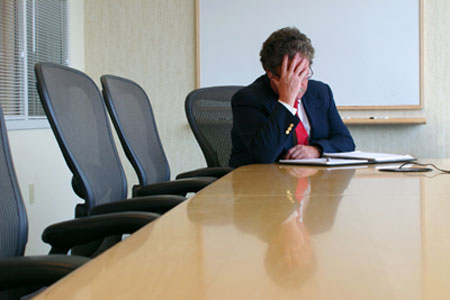Trying to define stress is an area you would like to avoid if you want to be practical. I can provide at least more than a thousand different definitions of stress, but those would not be useful to you unless you are into academia. So, we would not be focusing on a ‘definition,' but a workplace understanding of stress that includes the following concepts:

- Any component in the workplace environment and workflow that qualitatively or quantitatively affects productivity/performance is something to consider as stressful.
- Stress can be both good and bad according to organizational and individual objectives.
- Effects of stress are individualized and the same stress can either make or break a person, depending on the particular individual's physical, mental, and cultural conditioning.
- Understand that visible stress is the result of processes working on individuals.C:Documents and SettingsdhawalpDesktopdecisions_small.JPG Stress is an outcome not the origin of a process. It is a personal response and the outcome of the balance between pressure and an individual's personal ability to cope with that pressure.
- To tackle stressful outcomes on workplace conditions and workflows you have to start with the affected individuals and then track back and find out what can be changed to yield the maximum cost benefit in stress-management.
- Every human being has inbuilt psychological mechanisms to cope with stress. These mechanisms have different constitutions according to the difference in cultural conditioning. Farming could be stressful to an accountant, and similarly accounting could be stressful to a farmer, but there are no universally applicable denominators. Farming may not be stressful to every accountant and accounting may not be stressful to every farmer.
- You cannot build a productive workforce without stress-causing components. This is because a productive workforce is built by individuals with high levels of self-confidence and self-esteem. Both of these attributes are gained only by winning challenges and successfully coping with stress.
- The same causes of stress can set off both virtuous and vicious cycles depending upon the individual. Where we see a virtuous cycle occurring, we let things be, but where we see a vicious cycle occurring, we change the stress-causing component until we find the match which produces a virtuous cycle in an affected individual.
References:
Jeremy Stranks, Stress at Work: Management and Prevention (Burlington, MA: Elsevier/Butterworth-Heinemann, 2005)
Stephen Williams, and Lesley Cooper, Managing Workplace Stress: A Best Practice Blueprint (Chichester, England: John Wiley & Sons, 2002
Tiffany M. Field, Philip M. McCabe, and Neil Schneiderman, eds., Stress and Coping (Hillsdale, NJ: Lawrence Erlbaum Associates, 1985)
